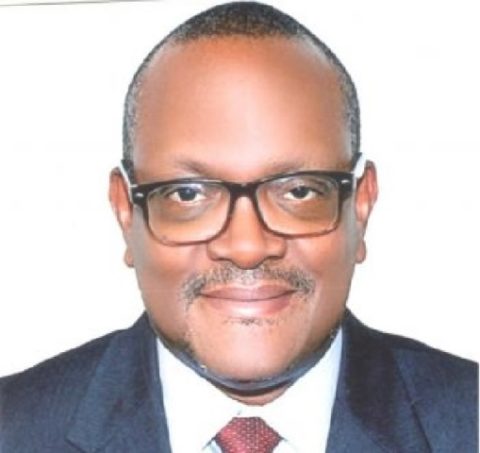Admits Printing Of LD$10 Billion Excess
By Gamah Never Lomo, garmahlomo@gmail.com
Ex Central Bank of Liberia Executive Governor, Milton A. Weeks has testified in his alleged printing of excess Liberian Dollars banknotes saying that before he assumed took office, the contract for printing was intact already and the purpose of for printing 5bn was to replace mutilated Liberian dollar banknotes.
According to former Governor, the process for printing the 5bn Liberian dollar banknotes was ongoing, but in the process it was clear that the 5 billion was inadequate to fully replace all of the mutilated banknotes.
And due to budgetary constraints, only 5 billion could be afforded at that time.
But he said after that, the process of printing additional banknotes continued.
Defendant Weeks said in his testimony that there was a mixed-up amount of money being printed ad it was the excess Liberian Dollars printed over the above 5 billion.
The former CBL Governor said an excess printing was by Crane Currency without approval. The first printing of Liberian dollars was done by a French Company, which he was approached that the Company capacity to print the money was unable.
According to him, It was based on that CBL contacted two other Bank notes printing company, De Le Rue and Crane Currency. The two companies made representations to the CBL by informing and discussing the matter.
The first Company had the right to a specific design of printing Currency. Crane Currency said it did not have the right to use the design that (Huber tel ) had used, and so requested for new designs. This was the first printing by Crane Currency Of Liberian dollars banknotes, he added
During the first Printing, there was always errors with some of the banknotes, therefore, on the first printing, the Printer miss some features. This is what Crane Currency informed us that they did, the first Print was better than they expected and they advised CBL that they had such amount in excess and offered to make it available to CBL at an affordable cost, Mr. Weeks told the Court.
Prior to taking over as CBL Governor, the management team at the Bank was headed by Charles E Sirleaf, the then acting Executive Governor.
“I was informed by the Executive Governor that the Money couldn’t be printed by the first Company. The printing of additional banknotes went up to10 billion,” the former CBL Governor said.
In May 2016, the Liberian government through the Ministry of Finance and Development Planning informed the CBL to continue to sell US dollars due to huge foreign exchange constraints.
All foreign exchange at the CBL was able to be utilized by the CBL.
M. Weeks said following this decision, the CBL as the means of generating foreign exchange to continue to serve customers, it introduced what is referred to as 25 percent on remittances. In total amount in personal remittances, using Western Union, MoneyGram was averaging about two hundred and forty Million USD per annum in 25 percent surrender.
Transmitted into roughly Sixty Million UDD or Five Million per Month. These amounts had to be paid to individuals by the Commercial Banks.
The Commercial Banks were straining in being able to pay customers due to only 20 percent were in the Commercial Banks
The Commercial Banks were therefore not agitating for the CBL to make Currency available. At the same time, there was significant agitation from the public and the Legislature. They complained of the existence of three different currency in Liberia at the same time
currencies in the Liberian economy–USD, Old notes and the newly printed banknotes.
By early 2017, the CBL was summoned on numerous occasions to explain to the Legislature what the CBL was doing about the abnormal exchange rate.
Mr. Weeks said during those discussions, there was a general discussion that we could not stop using the USD abruptly. However, it was a general agreement that the mutilated Money to be sent to replace all the legacy notes.
In the House of Representatives, establishing a specialized committee to work with the CBL on the issue. It also resulted into numerous executive sessions at the Legislature on the matter.
As Executive Governor, Mr. Weeks testified in court that he requested his Deputy for Economic Policy to have research department do an analysis on much of a quantity was left in the system and what it would cost to replace them.
“After receiving the information, we sent it to the Senate Executive session about the decision. First we do the USD to maintain for the time being. That we replace all the Legacy Notes and because there have been anger on the smaller not, that we could introduce larger note to fashion payment. CBL wrote Letter to Pro temp May 2017, confirming that they declared an Executive session during which we requested to provide information on the matter,” said Weeks.
“Our letter confirmed that 10 Billion should be printed and cost estimated at 10.4 Million USD. It was pointed out in the Letter that CBL couldn’t hold this amount in 2017 and suggested that in fiscal budget. Similar Letter was also written to the Speaker of the House of Representatives, providing the same information and also advising on the budgetary constraints. By June, there were more interaction with the Legislature especially the specialized Committee that oversaw this matter,” the former CBL Governor told the Court.

